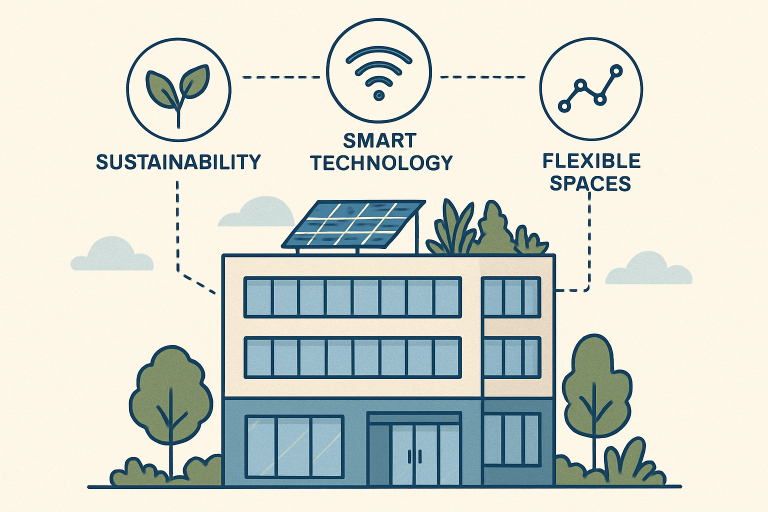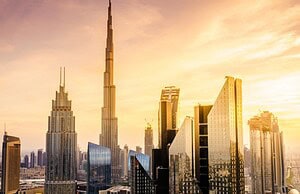Table of Contents
- Sustainable Practices in Restoration
- Integrating Smart Technologies
- Adaptive Reuse of Existing Structures
- Enhancing Indoor Air Quality
- Flexible and Multi-Use Spaces
- Incorporating Wellness-Centric Design
- Leveraging Data-Driven Maintenance
- Conclusion
Commercial building restoration is no longer just about fixing what is broken – it’s about transforming spaces to be more sustainable, technologically advanced, and adaptable to changing needs. Innovative strategies and integrated solutions now allow building owners and operators to restore your commercial building in a way that yields long-term value, while ensuring tenant satisfaction and regulatory compliance. Equipped with modern tools and design philosophies, today’s restoration projects set new standards for efficiency and well-being.
By adopting a comprehensive approach that combines environmental responsibility, state-of-the-art technology, and human-centric design, property managers can optimize their return on investment and future-proof their portfolios. From smart building automation to flexible workspace layouts, the latest trends cater to both owners seeking higher asset performance and occupants seeking healthier, more inviting environments.
Sustainable Practices in Restoration
Sustainability is a driving force for modern commercial building restoration. Property owners are increasingly implementing energy-saving systems such as high-efficiency lighting, low-flow plumbing fixtures, and upgraded insulation. Eco-friendly materials, chosen for their durability and low environmental impact, are now standard for both interior finishes and major systems replacement. Renovations that achieve certifications like LEED (Leadership in Energy and Environmental Design) often result in significant cost savings over time, as demonstrated by case studies such as the Empire State Building’s retrofit, which led to a 38% reduction in energy use and millions of dollars in annual operational savings. These improvements not only lower a building’s carbon footprint but also make properties more appealing to green-minded tenants and investors.
Integrating Smart Technologies
Adopting smart building systems is crucial for meeting the modern demands for operational efficiency and occupant comfort. Automated lighting with daylight sensors, intelligent HVAC controls, and IoT-enabled monitoring give facility managers unprecedented control over building operations. Such solutions provide real-time data that drives predictive maintenance and optimizes energy usage. Integrated building management systems can yield double-digit energy savings and facilitate smoother, more responsive maintenance workflows. As commercial tenants seek out spaces with seamless digital experiences, investing in smart technologies becomes crucial for business competitiveness.
Adaptive Reuse of Existing Structures
Adaptive reuse is transforming old, underutilized buildings into dynamic new spaces, reducing the need for demolition and new construction. This approach conserves resources and celebrates architectural character, while also delivering cost efficiency. Adaptive reuse projects often come in at 10-16% lower upfront costs than new builds, which is especially important as urban areas confront the challenge of ‘stranded’ office spaces. A standout example is the Hudson Commons project in New York City, where an aging office building was revitalized into a LEED Platinum-certified hub for innovation. Adaptive reuse not only honors history but also maximizes return on existing investments.
Enhancing Indoor Air Quality
Creating healthier indoor environments is a top priority in post-pandemic commercial spaces. Modern restorations involve upgrading HVAC systems with HEPA or MERV-13 filters and adding real-time indoor air quality sensors to monitor pollutants. Enhanced ventilation systems and thoughtful zoning help maintain consistent airflow and humidity, creating spaces where tenants feel safe and comfortable. Facility managers are also emphasizing routine maintenance and cleaning protocols to mitigate the presence of allergens and pathogens. These measures not only meet regulatory guidance but also contribute to increased productivity and reduced absenteeism among building occupants.
Flexible and Multi-Use Spaces
Restoration projects are increasingly centered around flexibility, anticipating the evolving needs of tenants amid fluctuating work styles. Movable walls, modular furnishings systems, and open-plan layouts enable quick adjustments to accommodate everything from group meetings to private focus work. These adaptive designs have become essential as more companies adopt hybrid and remote work models. Flexible spaces also support multiple uses, offering coworking, event hosting, and wellness activities within the same footprint, thus maximizing space utility and future readiness.

Incorporating Wellness-Centric Design
Wellness-centric design extends beyond aesthetics, focusing on features that promote both physical and mental well-being. Modern restoration involves maximizing natural light through larger windows, offering outdoor views, and incorporating biophilic elements such as indoor plants and green walls. Amenities such as wellness rooms, quiet nooks for relaxation, and even on-site fitness facilities create environments where well-being is a priority. Studies highlight that buildings with strong wellness initiatives help reduce stress, improve employee satisfaction, and contribute to an overall sense of community within the workplace.
Leveraging Data-Driven Maintenance
Advanced analytics and predictive maintenance are revolutionizing facilities management for restored commercial buildings. IoT sensors, coupled with artificial intelligence, provide ongoing insight into how equipment and systems are performing. Predictive models help spot irregularities before they become critical failures, allowing proactive intervention. This approach extends asset life, curtails costly downtime, and creates an ongoing cycle of improvement based on data-driven decision-making. As a result, building managers can better plan budgets, reduce waste, and ensure maximum reliability for both tenants and owners.
Conclusion
A holistic blending of sustainability, technology, and user-centric design defines today’s commercial building restoration. Through adaptive reuse, digital innovation, and an unwavering focus on well-being and flexibility, restored spaces are not only more efficient—they have a lasting appeal for modern businesses and their employees. By staying abreast of these cutting-edge strategies, property owners can transform aging assets into vibrant centers of productivity and resilience, securing relevance and value in a rapidly shifting market.






